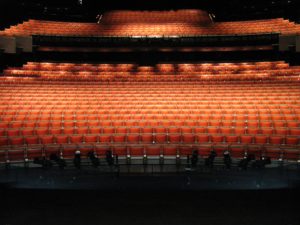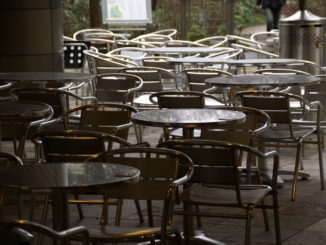
Australia is steadily coming out of COVID lockdown to find its already weakened arts industry in near ruins. Coronavirus is to blame apparently, though the Liberal government’s track record with the culling of the arts across Australia proves otherwise. This was a long time coming, and now, we might be too far gone.
The arts industry is not exclusive to visual arts—as the term of reference suggests—but incorporates other fields like design, fashion, broadcasting, electronic and digital media and film. In 2008, the Australian arts industry was generating $86 billion a year. A decade later, Australia saw a staggering 30% increase in the value of the arts industry. Cultural and creativity activity made up 6.4% of Australia’s GDP in 2017-18, having earned a $111.7 billion.
As a result of the political cold shoulder given to the arts industry, much of the Australian public underestimates the importance the arts play in the job market. In a recent survey conducted by The Australia Institute, it is believed that 68% of Australians underestimate the number of people employed in the arts relative to coal mining. According to the survey, coal mining employs a mere 49,600 workers while the arts employs 193,600—it is the second largest employer in Australia.
Those numbers are massive, and anyone outside of the arts may believe, and rightfully so, that an industry employing and earning such a large quantity does not need extra funding and support. But that is not the case when the Australian Bureau of Statistics found that arts and recreation was one of the lowest paid industries in Australia, with full-time employees earning on average $800 a week in 2017. Based on the report, casual and part-time employees would find that weekly wage cut in half. According to the Australia Council for the Arts, its economic study of arts in Australia over thirty years shows that incomes and job prospects for artists are dwindling. It is taking longer for them to attain career recognition which, in turn, affects their ability to increase their income and their chances of getting a grant.
The major point of contention in the arts is funding. Prior to the explosion of COVID-19 and subsequent restrictions, the Australian governments committed $1 billion in annual funding to the arts and culture sector. Seemingly an incredibly high number again, however, this amount of funding is barely 1% of Australian governments’ totals in combined expenditure according to the report by A New Approach.
Even though arts funding reached its highest point in the 2017-18 period, political support has not matched Australia’s population growth. There has been a 4.9% decrease in public expenditure from 2007 to 2018 and, a worrying addition to this point, Australia’s arts expenditure is drastically lower than other members of the Organisation for Economic Co-operation and Development.

In terms of major funding fumbles occurring in the past few years, the direct hit on the arts happened in early 2018. When Create NSW announced its funding recipients in May 2018, a month later than schedule, it was found that that round of the Arts and Development Fund was the smallest on record with only six of the initial 17 projects receiving $256,000 to share. NSW Arts Minister Don Harwin had taken over $400,000 of the $660,000 total from the Fund and inflated it with another $220,000 withdrawn from other parts of the arts portfolio to give a ‘one-off $1 million grant’ to the Sydney Symphony Orchestra. In 2017, the Sydney Symphony Orchestra had received close to $15 million in funding alone.
As reported by Michaela Boland of ABC News, recipients were ‘horrified’ to find that funding had been cancelled. The Sydney Fringe Festival was set to receive $35,000 to subsidise travel costs for regional arts performing in Sydney. Emerging artists were meant to receive $32,000 to showcase work at Cement Fondu. Leichhardt’s Articulate art space was expecting $50,000 to exhibit the work of dozens of artists during its annual program; ultimately, they were forced to cancel a program which would have funded over 30 artists and, for another program, had to have artists pay for their exhibition spaces instead. This likely made a severe barrier to entry for artists in financial hardship.
If Harwin’s affectionate million-dollar one-off hadn’t damaged arts funding enough, in 2019, the Arts Minister announced that peer assessment for grant applications had been replaced by ‘art form boards’ that were of his own choosing. And, as an addition, dedicated funding for artistic projects now ceased to exist. In the same funding round, artists and arts organisations would have to compete against requests for capital infrastructure and likely go ignored. The NSW government has a strenuous relationship with the arts sector, and this misuse of funding and disinterest in the success, even the failure, of artists crosses all fields. In 2018, the NSW government was in a legal dispute with the Copyright Agency, as NSW seems to be the only state that refuses to pay writers and artists fairly. In conjunction with this and, in the same vein, the Sydney lockout laws, the Berejiklian government’s strict ‘shut up or shut down’ approach has almost eradicated the state’s array of live music and festivals, potentially leading to festival performers, production crews, and other staff losing their jobs and their main source of income.
After all this comes the killing blow. Amid the COVID-19 lockdown, 49 Australian arts companies abruptly lost federal funding earlier this year. The companies included the Museum of Contemporary Art, the Sydney Writers’ Festival, and La Mama theatre. On the film and television side, Screen Producers Australia estimated that a total of 60 shoots across the country would have to be postponed or outright cancelled, with over 20,000 employees being put on unpaid hiatus, at best, and at worst, losing their jobs. In early April, the Australian Book Review denounced the Australia Council’s decision to cut funding from the ABR and other literary magazines in the 2021-24 round, and not because of the coronavirus. Following this shutdown trend, News Corp announced that it would be closing over 100 print publications and moving them online, and another 14 titles would completely disappear. With this decision, 500 people will lose their jobs.

Esther Anatolitis notes that the overwhelming majority of employees in the arts industry are working on a casual basis. Based on the technicalities of the JobSeeker/JobKeeper package, these casual workers may not be entitled to receiving the stimulus if they have not been employed for more than 12 months with a single employer. The companies that cannot demonstrate the radical downturn in income from the past couple of months will likely not be able to access JobKeeper and retain staff. Worst of all, migrants on work visas have no support whatsoever, not even access to healthcare, despite paying taxes.
Recently, Communications, Cyber Safety and Arts Minister Paul Fletcher estimated that the JobSeeker/JobKeeper package would boost the arts industry by $4 billion-$10 billion. The Media Entertainment and Arts Alliance found Fletcher’s claims to be starkly different from their own estimate. In response, Fletcher made it known that he was using estimates from a working paper published in October 2018 for a financial stimulus package that had only been conceived in 2020, in response to the COVID-19 pandemic and the subsequent dramatic downturn in a crashing economy.
MEAA CEO Paul Murphy responded that Fletcher’s numbers seemed to come ‘out of thin air’. Of the 1000 MEAA members surveyed, one in five had stated that they were denied both JobKeeper and JobSeeker. Murphy also disclosed that 68% of surveyed MEAA members were now unemployed and 60% had no major income, while 30% claimed that their income had been significantly reduced.
On its own, the arts industry may contribute a large percentage to Australia’s GDP, but it is severely underfunded and unsupported by the Liberal government. Since the beginning of the COVID-19 restrictions, the arts are the second worst-hit industry. In the span of a couple of months, employment dropped by 27% and wages fell by 17%. It is a grim reality and as much as Australian artists will try to persevere, hardy as they are, they may not be able to endure this financial drought any longer.




Be the first to comment